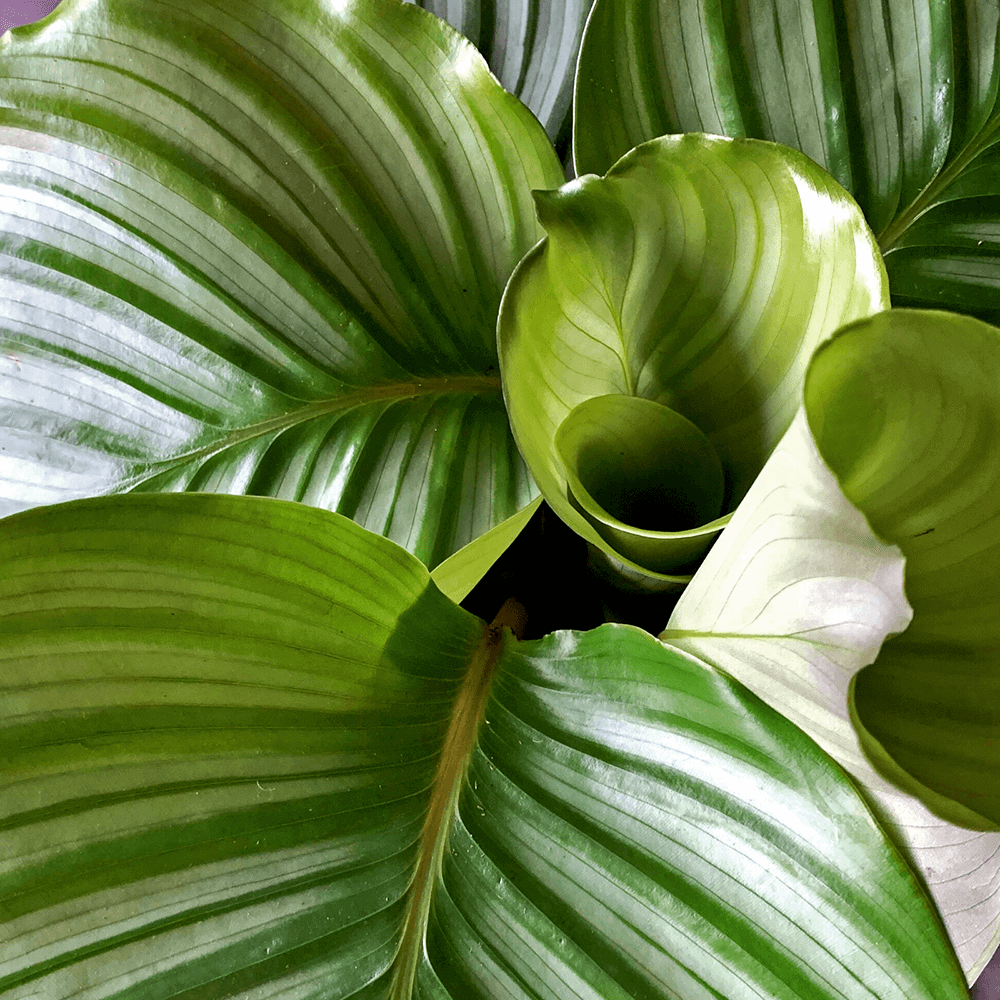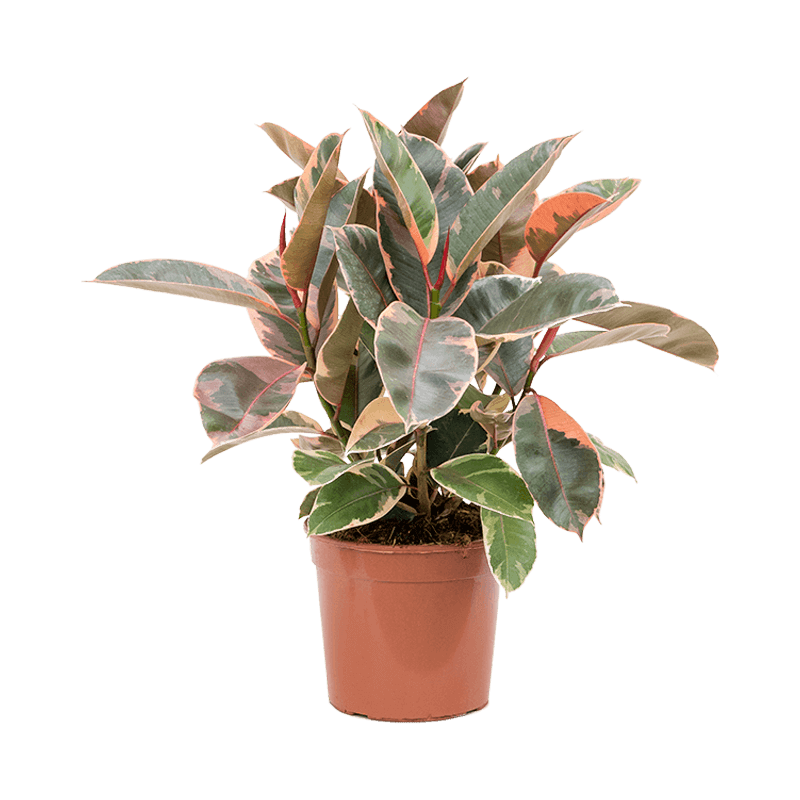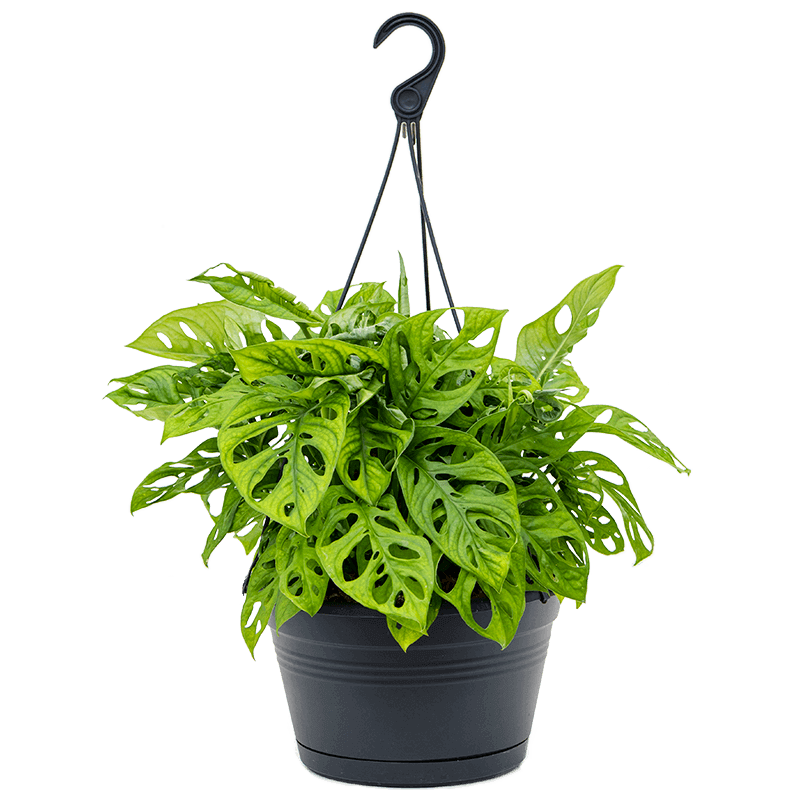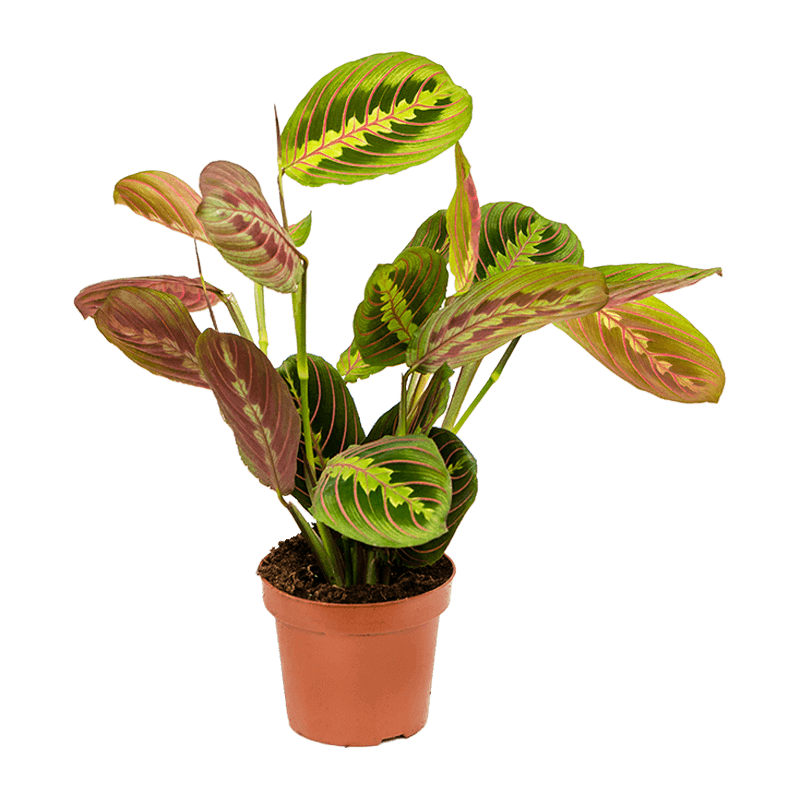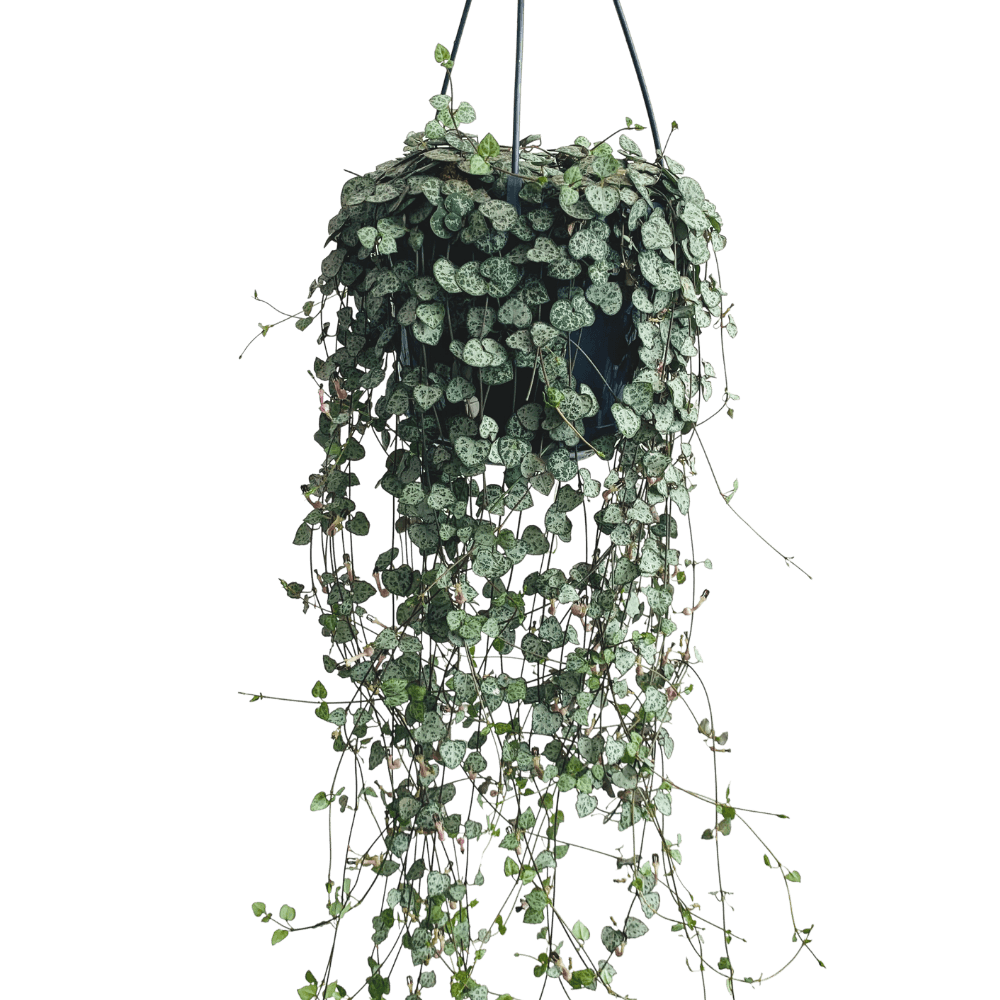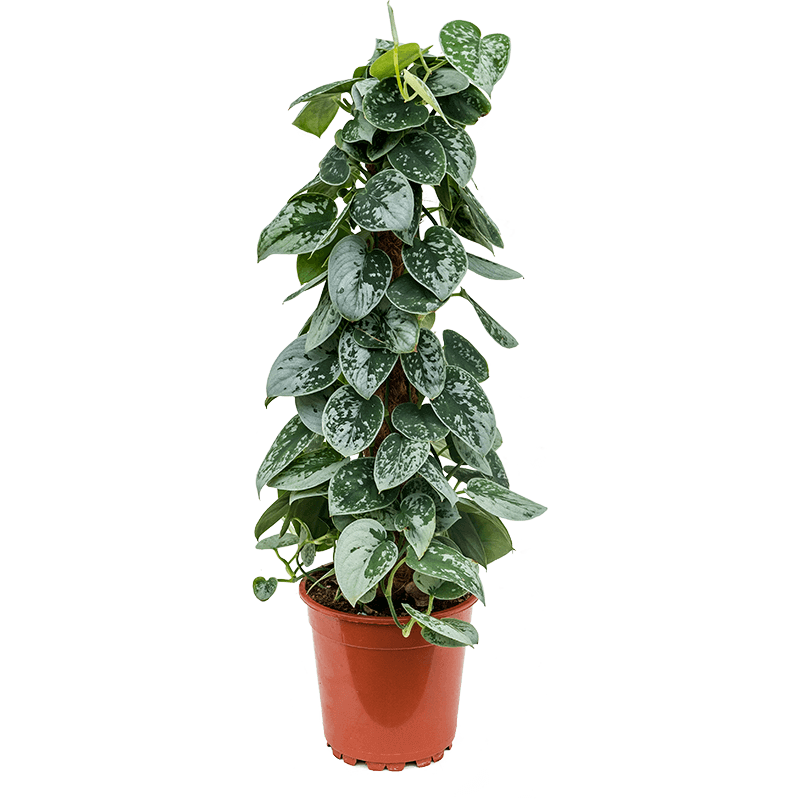how to care for calathea

quick care guide for calathea
 |
Once a week in summer; once every two weeks in winter |
 |
Does well in low to medium sun |
 |
Fertilize once every two weeks in the summer |
 |
Pet friendly |
 |
Strong air purifier |
Calatheas love well-draining soil that is kept consistently moist without being soggy. They like medium light, high humidity and thrive at temperatures between 18°C to 24ºC.
detailed care guide for calathea
Scientific Name: Calathea – also known as Goeppertia, Prayer Plant (name given to all calatheas)
Origin: Bolivia
Light: Medium, filtered light – can also handle low light temporarily (i.e. during winter)
Water: Water regularly to maintain moist soil but do not let the soil become soggy since the plant is prone to root rot. Use filtered, distilled or rainwater, especially if you live in an area with hard water.
Soil: Very important to have well draining potting mix – a good mix is two parts peat/coir and one part perlite. Avoid vermiculite.
Temperature: 18°C – 24ºC
Fertilizer: Every two weeks during growing season. Flush the soil several times per year to avoid buildup.
Humidity: Likes high humidity. Keep the leaves looking fresh & healthy by misting regularly.
Pruning: Only cut away old or yellowed leaves.
Re-Potting: Doesn’t need frequent repotting – only repot when it becomes root bound (roots sticking out of the bottom)
Propagation: Propagate by division in late spring/early summer. Can be tricky since the roots will be all tangled up.
Diseases and Pests: The most common and deadly vulnerability is root rot so avoid overwatering. Damp conditions can also promote fungus, powdery mildew & leaf-spot.
Toxicity: Non-toxic to humans or animals.
most common calathea varieties
calathea freddie

calathea lancifolia ‘rattlesnake’

calathea makoyana

calathea medallion

calathea roseopicta

calathea orbifolia

calathea origins & overview
A South American prayer plant kept for its clean, designer-quality foliage, the Calathea is a moderately fast grower and can reach heights up to 100 cm indoors while its bold elongated leaves can become over 30cm wide – it makes a classic statement plant.
Sometimes Calatheas are called prayer plants because they raise their leaves at night. In the evening, the leaves of calathea plants fold upright at the base of the stem, as if the plant is folding its leaves upward to pray. This process is called nyctinasty.
Calatheas can be fussy. They are tropical jungle plants so they require high humidity and consistent soil moisture to thrive. If your home is dry, you’re at a disadvantage.
There’s no need to fear a Calathea, however, only to understand it. Give it jungle-like conditions that include warmth and moisture, and you’ll both be happy.
calathea light requirements
Calatheas grow naturally in jungle shade and need to be kept out of direct sun. Overly bright light will fade and even damage their leaves. They do best in medium or even lower light, though you should avoid dim conditions. You can tell if the light is adequate if you can read without straining your eyes. If the light is too bright, the leaves will start to fade or get burnt, and they may even wither and die.
Although these calathea plants can survive in low light, they are not classed as plants for dark places. They’ll grow well on a north-facing windowsill or placed near an east-facing window. In rooms that face to the south and west, keep well away from the window in a shaded corner.
how to water the calathea
Calatheas must be kept in damp soil at all times, but definitely do not allow the plant to sit in water or in very wet soil. Think little and often as a watering policy.
To achieve the right moisture level, check the soil and rewater when the top few centimeters are almost dry. Stick your finger in the pot, does it come back out almost clean or is there a lot of soil sticking to it? If it’s clean then the plant needs some water.
Remember that you need to water Calathea plants more often in summer than in winter. Warm temperatures cause moisture to evaporate faster than in winter. However, in winter, you may have to mist the leaves more frequently than watering. Calatheas love high humidity, and central heating tends to cause dry air.
The Calathea is sensitive to water salts, chlorine, and build-up from old fertilizer, so it’s recommended to use filtered or purified water. If you’re seeing leaf discoloration or brown spots on the edges of the leaves, water quality could be the culprit. Don’t forget to occasionally (1-2 times per year) water more thoroughly and let the pot drain for 10 minutes or so. This helps flush the soil of any buildup.
Note: don’t use a terracotta pot with your calathea – terracotta absorbs water and will make your plant dry out too fast.
repotting the calathea
It is usually enough to repot your Calathea every two years. Generally, she doesn’t like being repotted because her roots get disturbed, but she doesn’t grow well if she’s rootbound. Repotting calathea plants allows you to refresh the potting soil, check the roots for signs of rot, and transfer to a larger container.
When repotting a Calathea plant, it’s crucial to avoid disturbing the roots too much. Here are the steps to repot an orbifolia:
- Pick a pot that is about 5 cm larger than its current one.
- Remove the root ball and very gently and carefully check the roots for signs of decay—brown and mushy roots.
- Half-fill the new container with appropriate calathea potting soil and put the plant in.
- Lightly fill the rest of the space with the remaining soil.
- Thoroughly water the orbifolia and put it in a warm shaded place.
frequently asked questions for calatheas
why are the leaves on my calathea turning brown on the edges?
This is the most common issue for Calatheas. Here are four possible reasons brown edges appear on your Calathea’s leaves.- Underwatering
- Low humidity
- Poor water quality
- Temperature fluctuations


